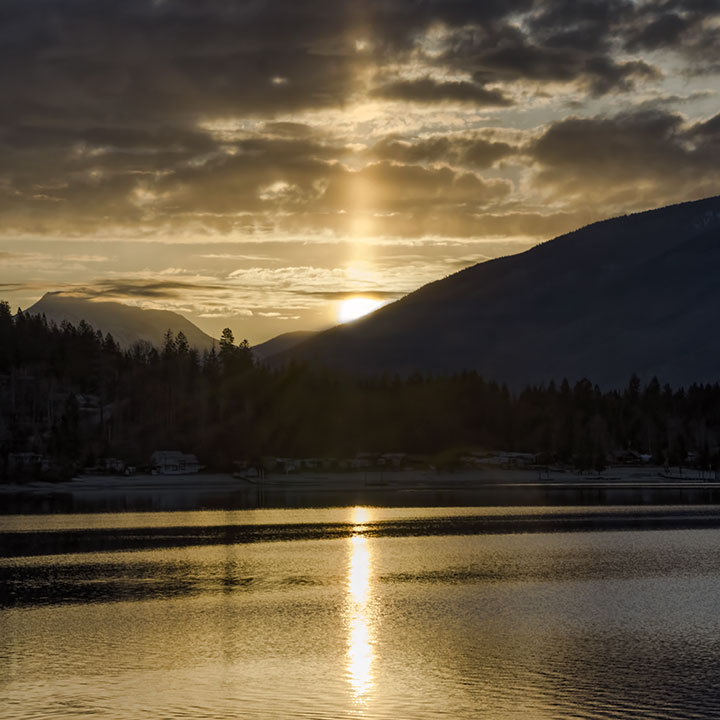Life in mountain valleys is usually life without sun pillars.
The problem is that pillars are really striking only when the Sun is low in the sky. Around here, the Sun generally appears from (or disappears) behind a mountain and so is already too high in the sky to produce a good pillar. Yet, there are times of the year when the rising or setting Sun aligns with a valley. That is the time to watch for sun pillars.
A pillar results from the reflection of sunlight off gently tipped surfaces. Most people are familiar with seeing a sun pillar on water. If the water were calm (perfectly horizontal), only a circular image of the Sun would appear. It takes the slight tipping from small waves to drag the Sun’s image out in the vertical. A resulting pillar is seen in the lower half of the picture.
Ice crystals provide the reflecting surfaces for the formation of the pillar above the Sun. Although the majority of the clouds seen here are composed of water drops, there is an all-but-invisible veil of hexagonal-plate ice crystals falling from them. These crystals settle with their broad plate-like surfaces nearly horizontal, rather like dinner plates spread on a table. Gentle oscillations of the falling crystals provide the slight tipping needed to spread the reflected image of the Sun into the pillar seen in the upper half of the picture.
For the next short while, the Sun will be rising (for me) in this gap between the higher mountains. With luck, I may get to see more sun pillars.


Fascinating. I’ll be watching for these from now on wherever I go. Of course the water makes it even better. 🙂
Lorna, and the water helped to tell the story.
Amazing. It must be wonderful to see with informed eyes. We need a summer camp to learn about these things. I need a little book of on all these phenomena with me always, to learn to see with informed eyes.
A follow-up on Pamella’s comment: “Alistair’s website takes us to a place that is often sheer magic, as we learn to look through his camera lens and see the world with his informed eyes.” I’m 74 and a life-long birder, but almost every posting takes me to new territory, a “Wow” response. What can we say but “Thank you, Alistair!”